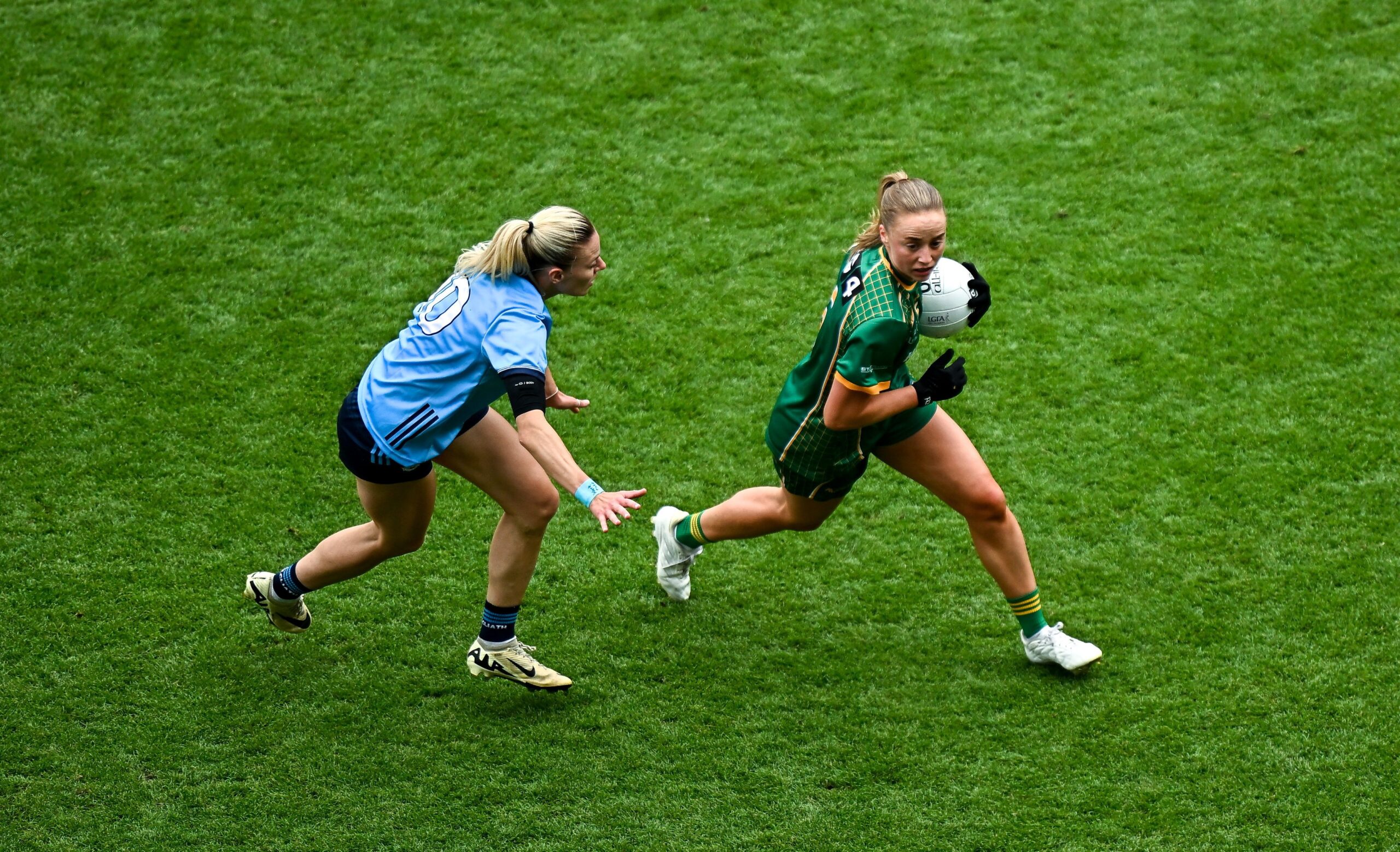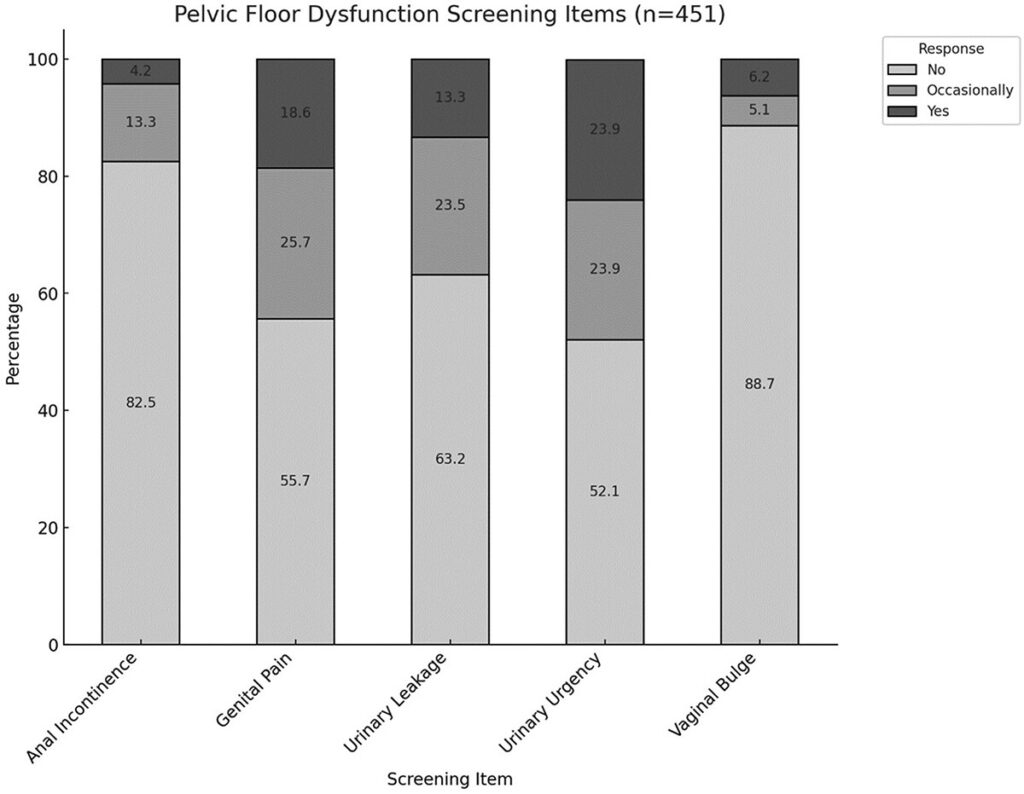
Menstrual cycle, hormonal contraceptives, and pelvic floor dysfunction in Ladies Gaelic Football and Camogie
- HerSport Editor
- August 6, 2025
- Other, Camogie, LGFA
- Camogie, Coaches, female athletes Ireland, LGFA, Menstrual Cycle, Research on Irish Female Athletes, Research Project, Study, Symptoms
- 0 Comments
Research By David Nolan, Poppy Jean Maguire & Lee Bell
From early morning pitch sessions to weekend matches, the commitment of Ladies Gaelic Football and Camogie players is nothing short of elite, even if the sport remains amateur. But what about the parts of our health that we rarely talk about? Their menstrual cycle, hormonal contraception, and pelvic floor health are more than just private concerns. They may directly affect how we perform, feel, and recover in sport.
That’s exactly what this new study from Dublin City University by Researchers David Nolan, Poppy Jean Maguire and Lee Bell set out to explore. (See the full Research Study and PDF on research attached at end)
What Was the Study About?
The research focused on female athletes currently playing Ladies Gaelic Football and Camogie across Ireland.
It looked at:
- How many use hormonal contraceptives (HCs)
- The types of side effects experienced from contraception and menstrual cycle symptoms
- The impact on perceived performance
- The prevalence of pelvic floor issues, like leaking or pain
With so little research done in Ladies Gaelic sports, these findings offer powerful insight into what our athletes are actually going through.
Menstrual Cycle Symptoms: The Hidden Struggles
Many players experience symptoms during their menstrual cycle; cramps, fatigue, mood changes, and back pain. Even though scientific studies don’t always show a big drop in performance during different menstrual phases, athletes themselves often feel like their performance is affected, especially during the early and late parts of their cycle.
The key takeaway? Every woman experiences it differently, and these symptoms are very real for many.
Also, heavy or irregular bleeding is more than an inconvenience—it can be a sign of menstrual dysfunction, which may affect both short-term performance and long-term health.
Hormonal Contraceptives: Common, but Not Side-Effect Free
Around 40–50% of female athletes in Ireland use some form of hormonal contraception. These include:
- The oral contraceptive pill (OCP) – the most popular
- Patches, injections, vaginal rings, arm implants, and intrauterine devices (IUDs)
Reasons for using them vary: preventing pregnancy, easing heavy periods, or managing symptoms. However, around 40% of users report side effects like mood swings or low energy.
The good news? Most studies show that the pill doesn’t negatively affect strength or muscle growth but we still need more research on long-term impacts.
Pelvic Floor Problems: More Common Than You Think
Do you ever leak a little when sprinting or jumping? You’re not alone.
This study found that up to 88% of female athletes have symptoms of pelvic floor dysfunction (PFD), such as:
- Urinary incontinence (leaking)
- Anal incontinence
- Pain during sex
- A feeling of heaviness or “bulge”
- Chronic pelvic pain
These symptoms can be embarrassing and isolating, often leading to stress, reduced fluid intake before games, use of pads, or even quitting sport altogether.
But here’s the thing: many athletes (and coaches) don’t even know what the pelvic floor is, or that it can be trained just like any other muscle group.

Why This Matters for You:
Ladies Gaelic Football and Camogie are fast, physical, and demanding. This research highlights just how much players deal with. Players often stay silent when it comes to hormonal health and pelvic wellbeing.
Whether you’re playing club or intercounty, you deserve:
- Accurate information
- Support from coaches
- Access to specialist care (like women’s health physios)
These issues are not “too personal” to discuss. They’re part of your performance, recovery, and overall health.
Read the Research Study:
This study shines a light on the real health challenges faced by Irish female athletes and it’s just the beginning. By breaking the silence and providing education, we can build a future where health and high performance go hand in hand in women’s sport.
If you’re a player, coach, physio or simply want to understand more about this crucial topic of female athletes playing at high performance levels, we encourage you to read the full research paper on “Menstrual cycle, hormonal contraceptives, and pelvic floor dysfunction in Ladies Gaelic Football and Camogie”. It provides a detailed breakdown of the findings, statistics, and references behind the insights shared here.
Click here to download the full Research Study PDF.
Whether you’re managing your own health or supporting others in sport, this research is a valuable tool to drive awareness, education, and change in women’s sport.
Have you experienced any of these symptoms in your playing career? Let us know what you think of this research study.






